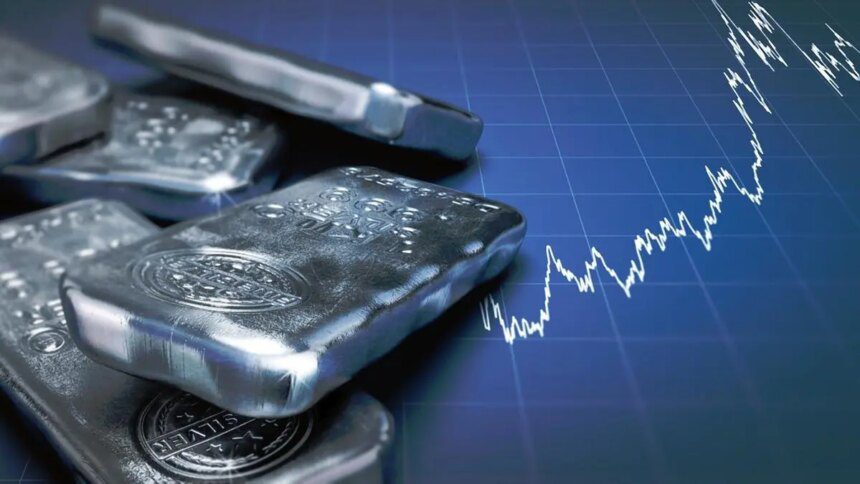Gold prices dropped further below $4,000 an ounce on indications that the recent rapid rally, which took the price to a record high, may have been excessive. Meanwhile, silver rose close to its highest level since 1980.
As of Friday, gold was trading around $3,963 an ounce, after a 1.6 percent decline in the previous session. Technical indicators show that gold has remained in overbought territory for much of the past month. This situation prompted some investors to secure profits following a significant four-day winning streak that peaked at $4,059.31 an ounce on Wednesday.
Chris Weston, head of research at Pepperstone Group Ltd, noted, “The strong momentum that had delivered new highs day after day gave way, with some traders keen to reduce exposure from extended positions and lock in performance.”
Silver reached $51.235 an ounce on Thursday, marking its highest point in over four decades before retreating. The metal remains approximately 70 percent higher for the year, significantly outperforming gold. This surge is part of an increased interest in precious metals, driven by concerns about an overheating stock market, fiscal pressures in the U.S., and threats to Federal Reserve independence.
Gold’s decline on Thursday coincided with a drop in U.S. equities. Although bullion is often viewed as a safe haven in market turmoil, it can also fall alongside risk assets as investors liquidate positions to cover losses elsewhere. Despite this, gold is still on track for its eighth consecutive weekly advance.
Demand for precious metals is increasing as part of the so-called “debasement trade,” where investors seek the safety of Bitcoin, gold, and silver while distancing themselves from major currencies, such as the dollar. Concerns regarding inflation and unsustainable fiscal deficits have further enhanced the appeal of these investments.
Spot gold fell 0.4 percent to $3,963.09 an ounce at 8:42 a.m. in Singapore. The Bloomberg Dollar Spot Index dipped 0.1 percent after reaching a ten-week high in the prior session. Silver, on the other hand, rose by 2.4 percent, while prices for platinum and palladium decreased.
Traditionally, silver prices move in alignment with gold, maintaining a strong negative correlation to the U.S. dollar and Federal Reserve interest rates. Additionally, silver has significant industrial applications in sectors such as solar energy and wind power, which account for over half of its sales. Demand is expected to outstrip supply for the fifth straight year by 2025.
The silver market in London has tightened significantly, leading to extremely high borrowing costs. This year, fears that the U.S. could impose tariffs on silver have accelerated the movement of the metal into that market, reducing inventories in London and impacting availability for borrowing. The implied one-month lease rate, which indicates the cost of temporarily borrowing silver, surged to unprecedented levels on Friday.
Silver has garnered a passionate following that has led to sharp price increases in previous years, including surges of 140 percent within five months in 2011 and 2020. The recent social media-driven momentum, especially from platforms like Reddit, has also contributed to price spikes.
The historical context of silver includes the actions of the Hunt brothers in 1980, who attempted to corner the market by stockpiling over 200 million ounces, pushing prices above $50 before a subsequent crash below $11.
Currently, silver remains one of the few markets whose price peaks from the commodity booms of the 1970s and 1980s have yet to be surpassed. In inflation-adjusted terms, silver’s current high is only about a quarter of its peak in 1980.
For ongoing updates, visit bloomberg.com.
Published on October 11, 2025.










